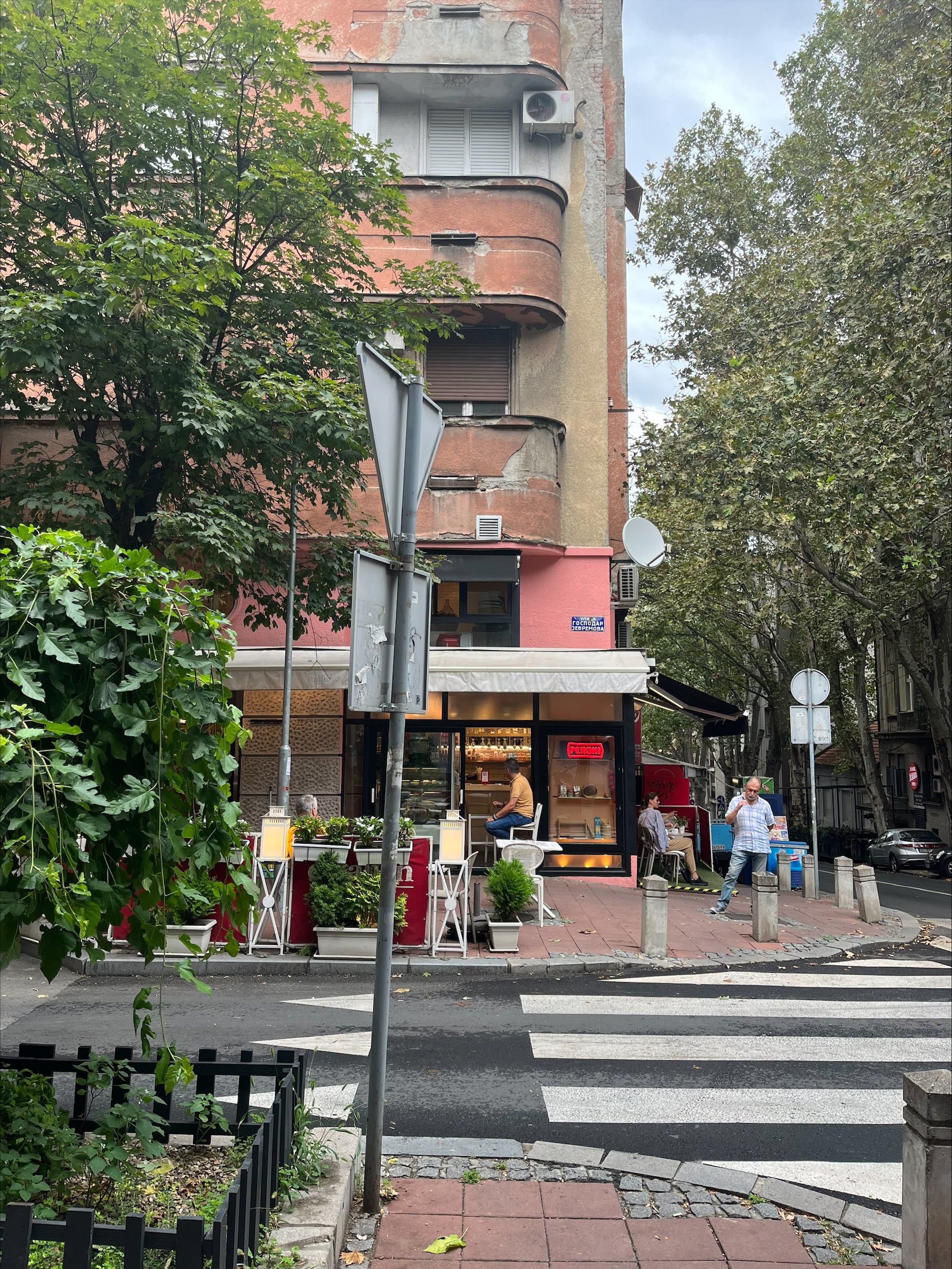
Postcards
Guadalajara Mexico
Personal odes to the places we‘ve loved, postcards are your antidote to the non-stop checklists and blur of the fast-paced travel lifestyle: strip back the glamour, slow down and hear real, human stories of the world.
Postcard from Belgrade
Mid-afternoon in Belgrade, everyone drinks their coffee outside. Even in this week of September, when summer is slipping away and the emergence of autumn is in the wind, streets are lined with outdoor seating. As the afternoon deepens, these spots will transition from cafes to bars. Wooden tables and chairs balance on a crooked pavement. Crumbling walls painted pink display messy Cyrillic at a cafe on the corner of Studentski Park. Here my friend and I drink our coffee whilst old men shout into the phone and other young friends exchange words in between breaths of smoke. This is the hour where brutalism is bathed by a golden haze.
Belgrade is a city of many lives. On one bank of the Danube stand soviet blocks plastered with peeling billboards. On the other, a half-city that resembles Vienna or Budapest - church roofs dispersed amongst old European buildings and tram lines. There's a familiarity to covering my shoulders to enter St Michael’s Cathedral or riding a crowded red tram through the city. I am accustomed to the kiosks selling magazines and cigarettes. There’s unfamiliarity in Cyrllic signs, smoking indoors, bus station fees and murals that declare ‘kosovo is serbia’. I am conscious of my ignorance as an outsider.
These epochs of history are visible in fragments. One piece lies in a socialist themed restaurant, where a constellation of red stars lie amongst strings of garlic and stacks of espresso cups. This past also remains in the maps, aeroplane tickets, badges, military hats and election posters that have made this time capsule, and again in the elderly woman who sells Lenin pins and old passports. Her shop is not far from the Bajrakli Mosque, a gesture to another past of Belgrade’s Ottoman rule. The weight of the past consumes me most overwhelmingly in Tito’s Mausoleum, a white building with marble walls adorned with eulogies, photographs of renowned visitors and letters of sadness from Yugoslavian schoolchildren. I find a strange peace in the untouched - this room feels like a portal taking me back forty years, the unchanging tomb boasts stillness amidst the endless flux of visitors.
And Belgrade is certainly moving. As the sun sets, us guests are seated on the stone steps of the old hostel building. We are connected only by chance. Dusk approaches and we get ready to cross the river towards the flickering neon lights of the party boats that emerge with the night. Amongst the music and fuzzy from the rakija served at dinner, we dance with Belgrade and I think of the wall of photo booth strips I saw displayed in the contemporary gallery earlier on my trip: friends smiling in fur hats and thick winter coats, a couple holding up their newborn baby to the camera, faces concealed behind costume glasses all stamped December 1988. I think of the children, now adults, who once wrote those letters to Tito, and the old woman selling memorabilia in her antique shop. They power Belgrade as it flows between histories, and I, an outsider to memory, try to find my own place within this city.


